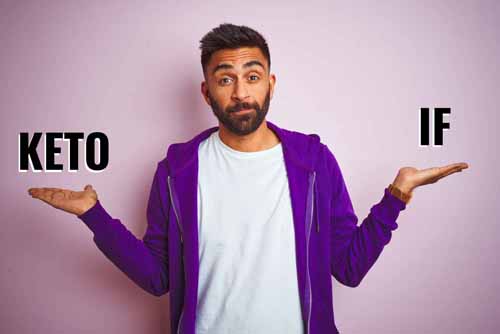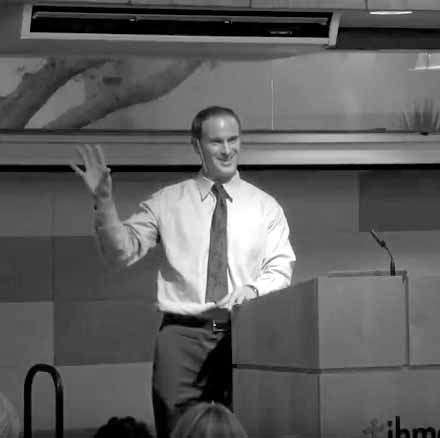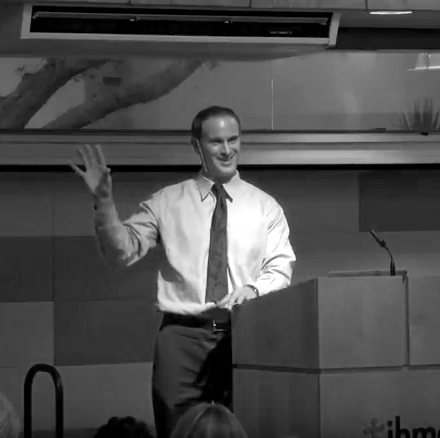Keto vs Intermittent Fasting: Which Is Best?
Written by Stephen Anton PhD on January, 15th 2022

Over the past decade, both intermittent fasting and the ketogenic diet have garnered increasing attention and become very popular. And for good reason!
There are millions of people who have experience dramatic health improvements and fat/weight loss with both approaches. This tells us that there is not necessarily a right or wrong choice, but rather a right or wrong choice for you. And the only way to know this is by experimenting a bit with the two types of dietary patterns. By having an open mind, you will figure out what and when you prefer to eat and which eating pattern works best for you.
Before, we compare and contrast the two approaches, we first need to clarify what we mean by “intermittent fasting” and “the ketogenic diet”.
What Is Intermittent Fasting?
In general, intermittent fasting is a broad term to describe an extended period of time period, typically 14 hours or longer, during which calories from food or beverages are not consumed (black coffee black and unsweetened teas are generally okay)[1]. When this occurs on a daily basis, this is called ‘time restricted eating’ and is what most people think of when they hear the term intermittent fasting [2]. There are many other types of intermittent fasting approaches but this is the most popular and the one we will focus on today.
During the daily eating window, there are generally not specific instructions on the amount or specific types of foods that can or cannot be consumed. Of course, it is recommended that foods should be ‘healthy’, meaning minimally processed and nutrient dense.
What Is Keto?
In contrast, the ketogenic diet advocates carbohydrate (not time) restriction, combined with high fat intake. The primary goal of this dietary approach is to get into and stay in a state of ketosis, which is a metabolic state characterized by elevated levels of ketone bodies in the blood or urine [3].
How Are Keto and IF Similar?
Physiologic ketosis provides an additional energy source for the brain in the form of ketones. Ketosis is a normal response to low glucose availability, such as through low-carbohydrate diets or fasting.
So, both ketogenic diets and intermittent fasting, share this pathway, and its many beneficial effects.
There are clear advantages to being in a state ketosis or to use ketones as a source of fuel. First, ketones lead to greater production of energy (ATP) at the level of mitochondria than glucose. Second, the energy produced through this pathway is cleaner than the energy produced through glucose pathways. This means the cells and organs experience less oxidative stress when we are in a state of ketosis or have elevated levels of ketones in our blood. Third, we are likely to experience improvements in our cognitive and physical function, as well as metabolic processes [4], when in ketosis. Additionally, both approaches have been shown to extend lifespan in animals.
How Are Keto and IF Different?
There are three key differences that occur due to intermittent fasting (time restriction) versus the ketogenic diet (carbohydrate restriction): 1) the source of fat used for energy, 2) levels of autophagy, and 3) steadiness of metabolic state versus metabolic flexibility.
Can You Combine Keto and IF?
This is an option that many people swear by, and I think this could work well, particularly if your goal is to lean out or lose some body fat. There is a high likelihood this approach will lead to an energy deficit as you would be restricting both carbohydrates and the time period in which food is consumed. Due to the increase in energy expended during the fasting time period, and likely decrease in energy consumed during the eating time period. So that combination is likely to put the body in a fat burning mode for the majority of the day and night.
Which Approach is Right for You?
The freedom to choose your path is what makes life interesting. My advice is to experiment with the dietary plans and see if one works best for you. Personally, I am an advocate for intermittent fasting because of the effect on autophagy. But both approaches have benefits and the best approach is the one that resonates with you and is sustainable.
More on intermittent fasting:
Keto vs Intermittent Fasting: Which Is Best?
Written by Stephen Anton PhD on January, 15th 2022

Over the past decade, both intermittent fasting and the ketogenic diet have garnered increasing attention and become very popular. And for good reason!
There are millions of people who have experience dramatic health improvements and fat/weight loss with both approaches. This tells us that there is not necessarily a right or wrong choice, but rather a right or wrong choice for you. And the only way to know this is by experimenting a bit with the two types of dietary patterns. By having an open mind, you will figure out what and when you prefer to eat and which eating pattern works best for you.
Before, we compare and contrast the two approaches, we first need to clarify what we mean by “intermittent fasting” and “the ketogenic diet”.
What Is Intermittent Fasting?
In general, intermittent fasting is a broad term to describe an extended period of time period, typically 14 hours or longer, during which calories from food or beverages are not consumed (black coffee black and unsweetened teas are generally okay)[1]. When this occurs on a daily basis, this is called ‘time restricted eating’ and is what most people think of when they hear the term intermittent fasting [2]. There are many other types of intermittent fasting approaches but this is the most popular and the one we will focus on today.
During the daily eating window, there are generally not specific instructions on the amount or specific types of foods that can or cannot be consumed. Of course, it is recommended that foods should be ‘healthy’, meaning minimally processed and nutrient dense.
What Is Keto?
In contrast, the ketogenic diet advocates carbohydrate (not time) restriction, combined with high fat intake. The primary goal of this dietary approach is to get into and stay in a state of ketosis, which is a metabolic state characterized by elevated levels of ketone bodies in the blood or urine [3].
How Are Keto and IF Similar?
Physiologic ketosis provides an additional energy source for the brain in the form of ketones. Ketosis is a normal response to low glucose availability, such as through low-carbohydrate diets or fasting.
So, both ketogenic diets and intermittent fasting, share this pathway, and its many beneficial effects.
There are clear advantages to being in a state ketosis or to use ketones as a source of fuel. First, ketones lead to greater production of energy (ATP) at the level of mitochondria than glucose. Second, the energy produced through this pathway is cleaner than the energy produced through glucose pathways. This means the cells and organs experience less oxidative stress when we are in a state of ketosis or have elevated levels of ketones in our blood. Third, we are likely to experience improvements in our cognitive and physical function, as well as metabolic processes [4], when in ketosis. Additionally, both approaches have been shown to extend lifespan in animals.
How Are Keto and IF Different?
There are three key differences that occur due to intermittent fasting (time restriction) versus the ketogenic diet (carbohydrate restriction): 1) the source of fat used for energy, 2) levels of autophagy, and 3) steadiness of metabolic state versus metabolic flexibility.
Can You Combine Keto and IF?
This is an option that many people swear by, and I think this could work well, particularly if your goal is to lean out or lose some body fat. There is a high likelihood this approach will lead to an energy deficit as you would be restricting both carbohydrates and the time period in which food is consumed. Due to the increase in energy expended during the fasting time period, and likely decrease in energy consumed during the eating time period. So that combination is likely to put the body in a fat burning mode for the majority of the day and night.
Which Approach is Right for You?
The freedom to choose your path is what makes life interesting. My advice is to experiment with the dietary plans and see if one works best for you. Personally, I am an advocate for intermittent fasting because of the effect on autophagy. But both approaches have benefits and the best approach is the one that resonates with you and is sustainable.
More on intermittent fasting:

Get the Beginner’s Guide to Intermittent Fasting
Take advantage of this FREE PDF and learn the basics of intermittent fasting.

Get the Beginner’s Guide to Intermittent Fasting
Take advantage of this 100% free PDF and learn the basics of intermittent fasting.

Get the Beginner’s Guide to Intermittent Fasting
Take advantage of this FREE PDF and learn the basics of intermittent fasting.









